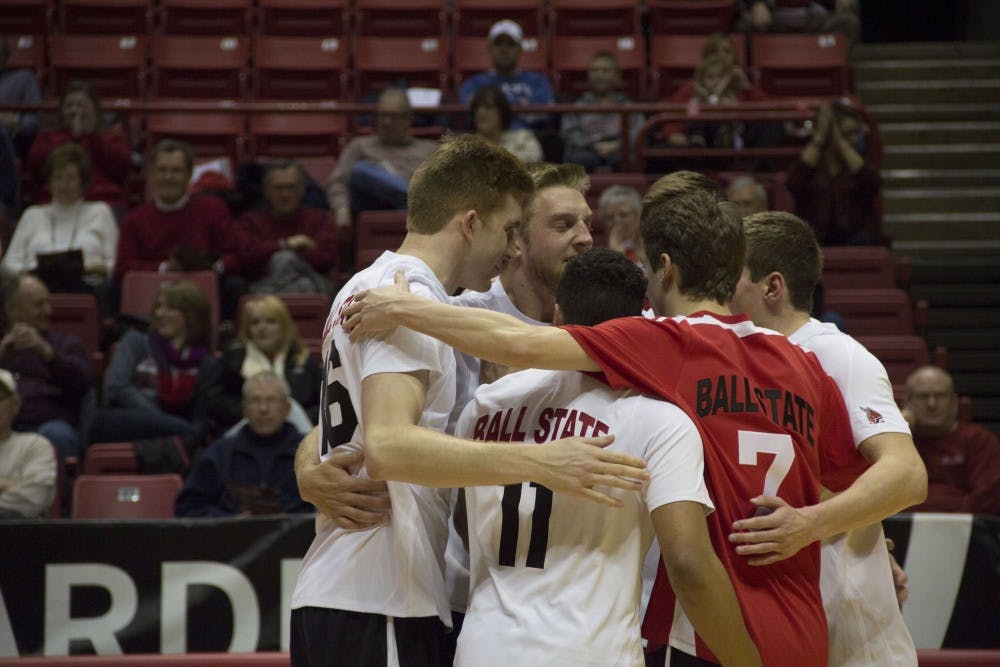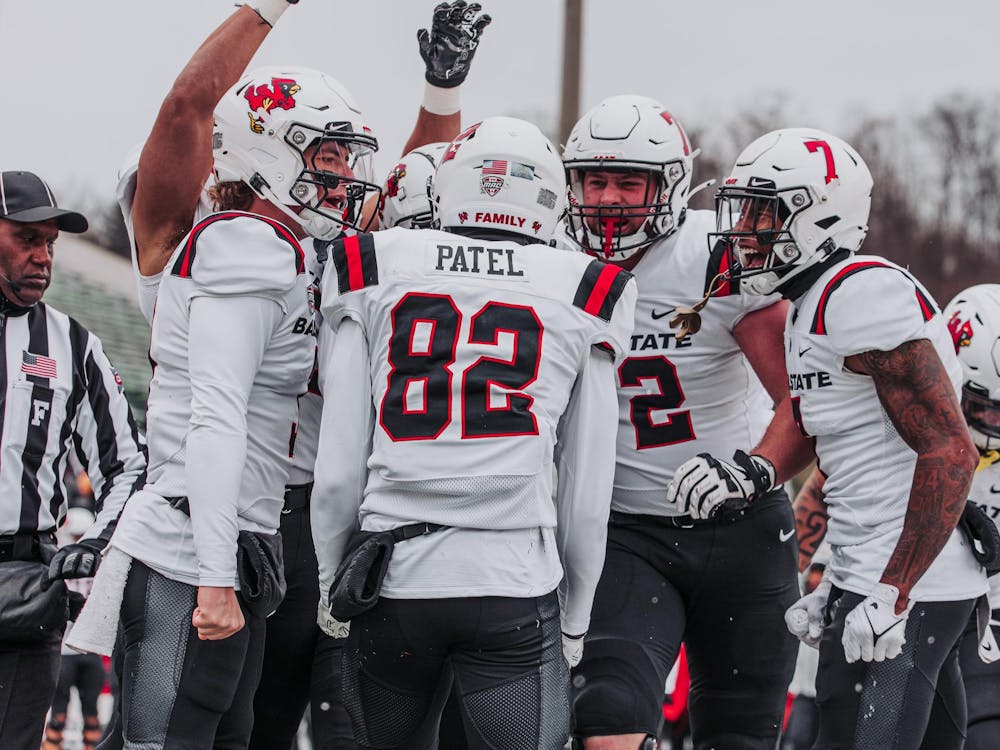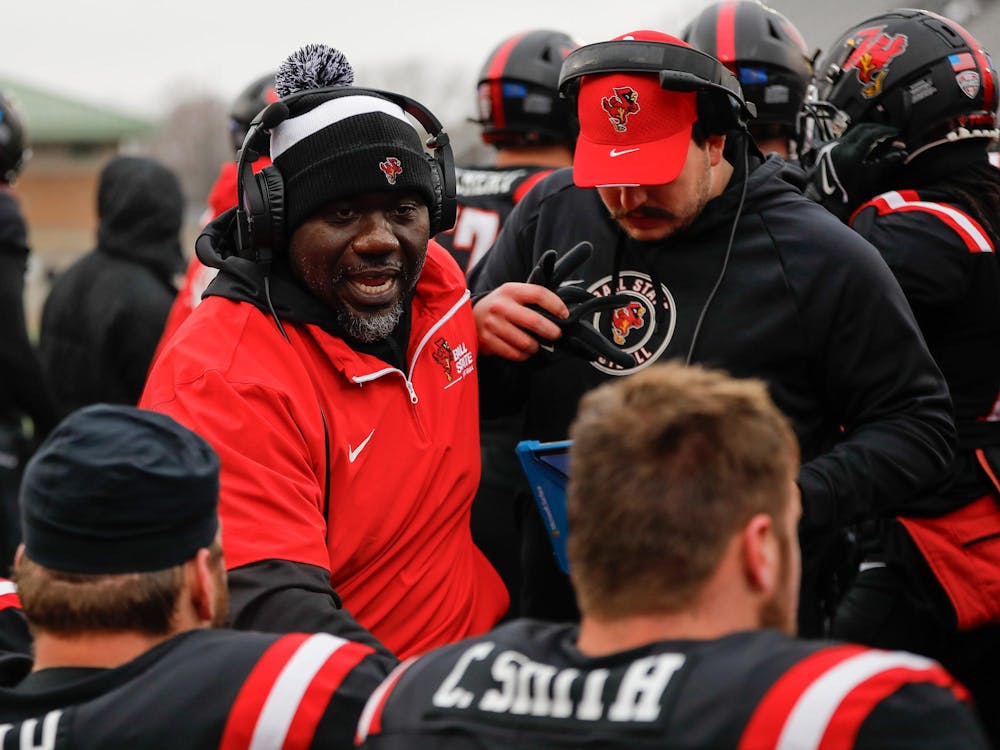A volleyball cut through the air, barely rotating as it tipped the top of the net and fell backward.
Senior Larry Wrather frowned and shook his head, unhappy with the result.
“One more,” he said quietly to his teammate next to him toward the end of Tuesday morning’s practice. He tried again. This time, his serve cleared the net.
It wasn’t just Wrather who worked on his serves. Head coach Joel Walton had the entire team practicing as a result of the poor serving he saw during the first two matches when Ball State committed 25 service errors.
Wrather has one error so far, possibly because of his new serving style.
“I just changed from a jump topspin to a float,” he said. “Right now, I’m working on placing the ball while getting good, solid hand contact, which allows it to have good movement.”
His float serve is difficult for opponents to track because of its lack of movement. Without the spinning, the ball makes quick jumps in the air, making it hard for the opponent to determine where it will land.
Wrather gave the volleyball a low toss and struck it with the palm of his hand, not bending his wrist — the classic strike for a float serve.
“Depending on what air current it catches and how well it’s hit, that ball can start shifting and floating in any direction,” Walton said. “It can be harder because of the unpredictability.”
Senior Graham McIlvaine attempted serves completely opposite to Wrather’s. Instead of the slow, erratic look of a float serve, McIlvaine used a spin serve.
He tossed the ball several feet into the air, spinning it as it left his hand. Coming down, he leapt and struck the ball, emitting a loud crack as the ball quickly fired over the net, dipping downward rapidly.
When McIlvaine hit the ball, he quickly bent his wrist, attempting to create a spin that causes confusion for the opposing team.
McIlvaine’s tied for the title of most service errors with five, mostly because the dipping motion can send the ball into the net.
“Sometimes, it’s easier if there’s a little spin on the ball for defenders because at least they can get an idea of where the ball is going,” Walton said. “Graham was contacting behind and also through, meaning it was moving in a direction toward the corner.”
When performed correctly, both serves can leave defenders feeling helpless. Sophomore Marcin Niemczewski leads the team in service aces with four, making up half of the service aces on the team.
Walton said his team isn’t always trying to achieve aces with their serves, but sometimes move defenders out of position and force bad passes.
“The main focus when returning one of those serves is to keep your balance and stay grounded,” Walton said.
That’s easier said than done.





